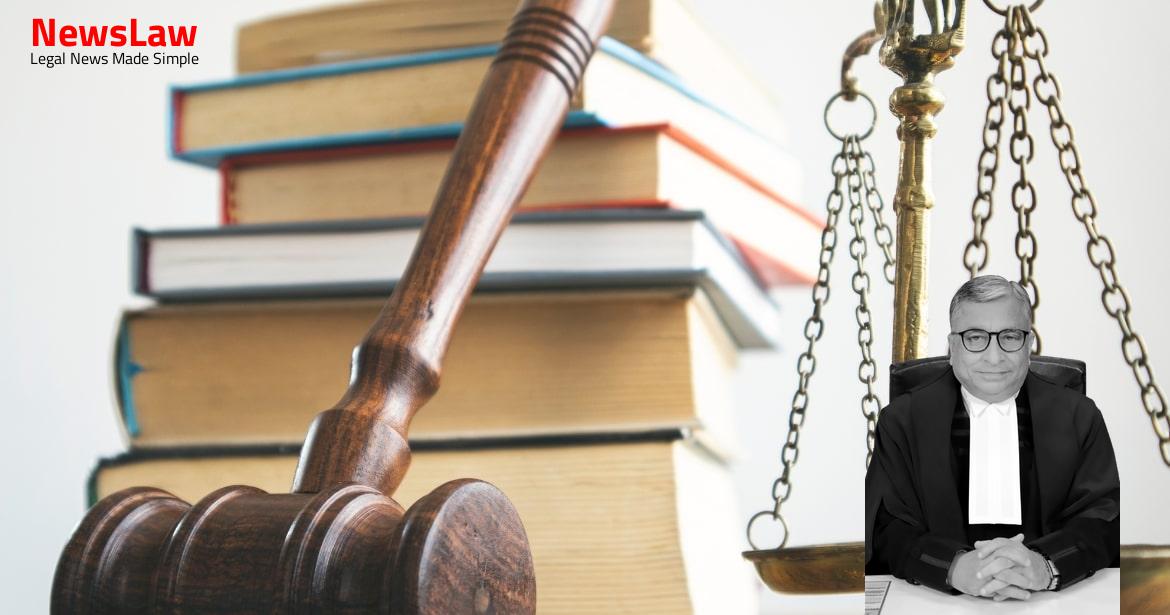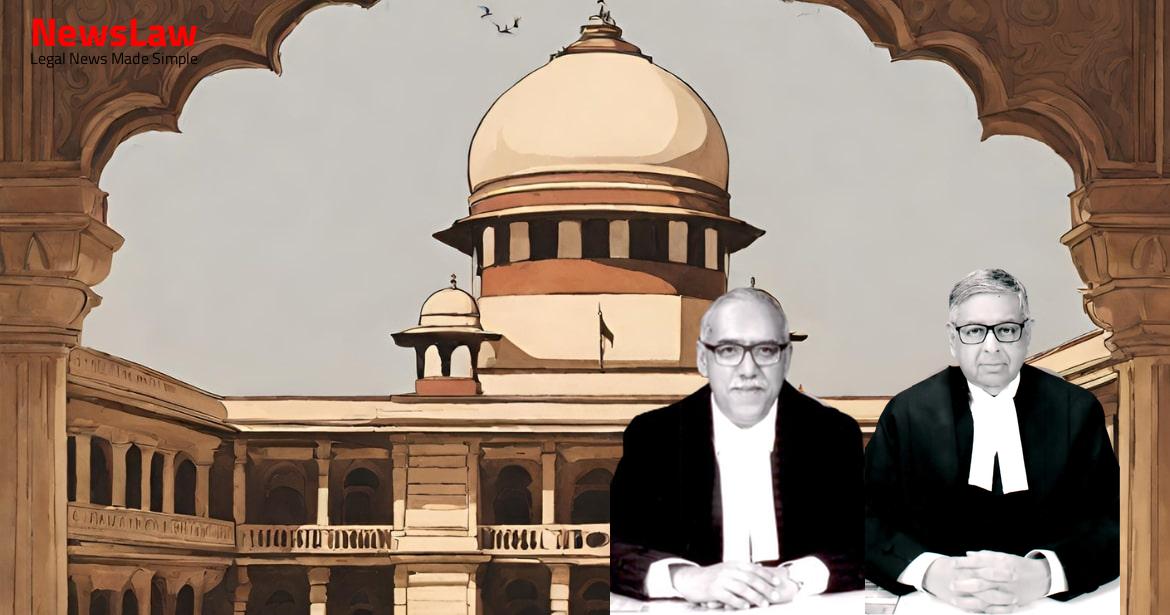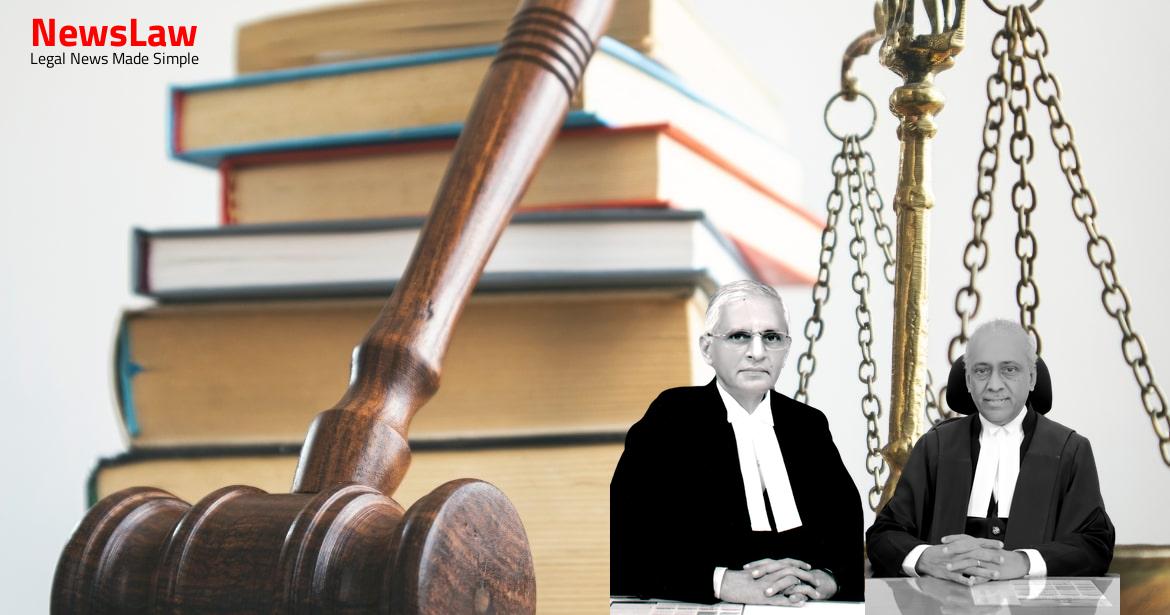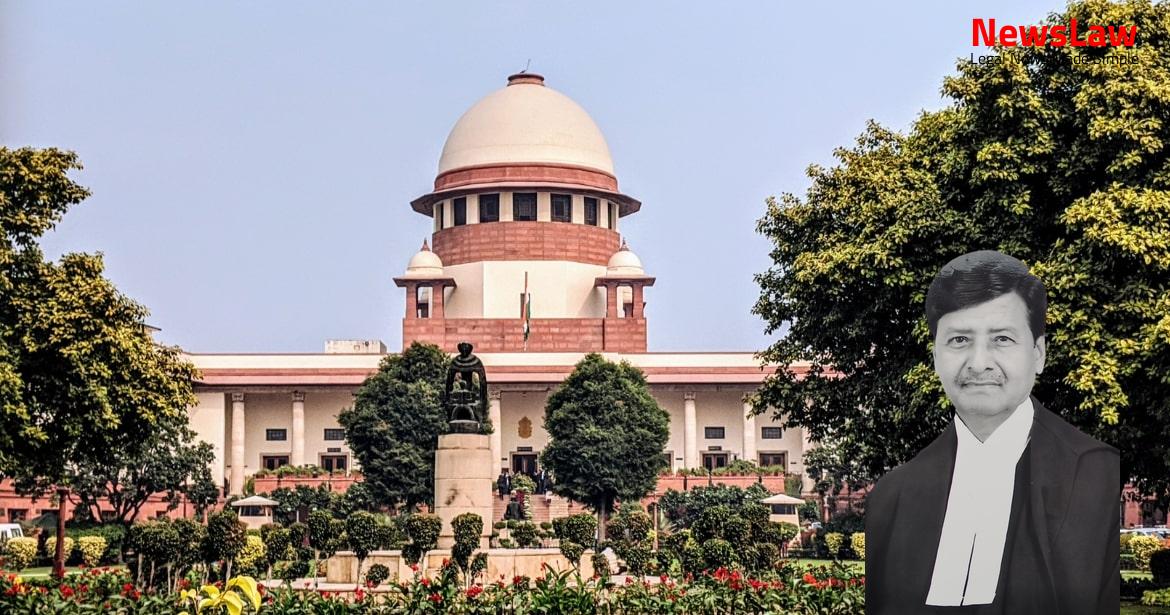Explore the complexities of determining compensation in a personal injury case through the lens of the court’s legal analysis. Uncover the various considerations and factors that influence the final award, providing valuable insights into the judicial reasoning behind such decisions.
Facts
- The victim suffered head injury causing brain concussion, brain stems injury, diffuse axonial injury on the left side.
- He underwent extensive treatment in Medical College Hospital, Vandanam, Alappuzha, and Medical Trust Hospital, Ernakulam.
- The claim was not contested by the owner of the vehicle and was decided ex-parte.
- The victim had right sided Hemiparalesis and weakness on the other side.
- At the time of the accident, the victim was represented by his wife as the legal guardian and next friend.
- The accident occurred on December 31, 2003, while the victim was riding his bicycle along Alappuzha-Kollam highway.
- The vehicle involved was registered as KL-2/No.9779 and rash and negligent driving by the driver was proved.
- The first respondent was removed from the array of parties by an order of the Court.
- Various expenses like transportation charges, bystander expenses, extra nourishment, and damage to clothing were incurred.
- Compensation was awarded for pain and suffering, permanent disability, loss of earning power, loss of amenities, future treatment, totaling to Rs.4,00,000.
- High Court enhanced the victim’s notional monthly income to Rs.3500/- per month.
- The accident occurred on the last day of 2003 and the victim was the breadwinner of his family.
- The victim’s wife, the second appellant/claimant, was unable to work due to caring for her husband.
- The Tribunal’s assessment of 50% permanent disability was deemed irrelevant due to the High Court awarding compensation for 100% disability.
- The total balance compensation awarded was Rs.4,47,000/- with 9% interest from the date of petition till realization to be paid within one month from the judgment receipt.
- The Medical Board certified the victim’s permanent disability at 50%, forming the basis for compensation assessment by the Tribunal.
- The High Court considered additional documents and determined the victim’s disability as 100% for proper compensation calculation, applying a multiplier of 16.
- The appellant required ongoing treatment post Tribunal’s award, with the High Court observing his condition akin to lying virtually as a vegetable.
- The victim had permanent right hemiplegia locomotor disability post head injury, not likely to improve.
- The High Court modified the victim’s notional monthly income to Rs.3500/- after considering his 100% disability status in 2017.
Also Read: Supreme Court Judgment on Single Till Mechanism for HRAB Calculation: A Comprehensive Analysis
Arguments
- The insurance company is contesting the quantification of the victim’s monthly income at Rs.3,500/-
- They are requesting a 50% reduction in compensation from the current judgment and order
- The insurance company argues that the victim has been under-compensated in light of the severity of the injury
- A plea has been made for compensation under the category of loss of future prospects
- The appellants claim that the High Court erred in using a multiplier of 16 instead of the previously determined 17 by the Tribunal
- There is opposition to the appellants’ request for an increase in compensation
- The argument of contributory negligence is raised, stating that the first appellant was inebriated at the time of the accident
- The respondent insurance company cited the case of Mohan Soni vs Ram Avatar Tomar & Ors. [(2012) 2 SCC 267] to argue that physical disability resulting from an accident should be judged based on the nature of work being performed.
- The case of Priya Vasant Kalgutkar vs Murad Shaikh & Ors. [(2009) 15 SCC 54] was referenced, which relates to computation of compensation for injuries suffered by a minor.
- Attendant charges plea was resisted due to lack of proof of service by any bystander or bills for surgery/hospitalization expenses in the last 17 years.
- The insurance company did not appeal the High Court’s findings on compensation heads and amounts awarded.
- The case of Sri Ramachandrappa vs The Manager, Royal Sundaram Alliance Insurance Company Ltd. [(2011) 13 SCC 236] was cited in this regard.
- Cases of Arvind Kumar Mishra vs New India Assurance Co. Ltd. & Anr. [(2010) 10 SCC 254] and National Insurance Company Ltd. vs. Kusuma and Anr. [(2011) 13 SCC 306] were referenced on what constitutes just compensation.
- The insurance company argued that the victim’s personal expenses should be considered as one-fourth of the assessed loss of income.
Analysis
- The computation method in this case is based on sound logic.
- The victim was a skilled laborer in a building construction project, but not on a permanent roll.
- The methodology used is not applicable to the facts of this case.
- A lump sum of Rs. 7,00,000/- is deemed appropriate for medical attendant charges and future medical treatment.
- The loss of earning capacity of the victim is 100%.
- There is no evidence to prove the victim had a permanent job.
- The family members likely had to divert their time from any gainful employment to be caregivers.
- The insurance company’s submissions regarding compensation under welfare statutes have no legal basis.
- The multiplier to be applicable in this case would be 16 following the specification contained in the case of Sarla Verma & Ors. vs Delhi Transport Corporation & Anr.
- Loss of income and permanent disability compensation were computed treating their income to be Rs.15,000/- per annum.
- Appellants seek to raise the amount to Rs.6,00,000/- based on the Mallikaarjun Vs. Divisional Manager, National Insurance Company Ltd. & Anr. case.
- In the case of Kajal, a young girl of 12 years with 100% disability was awarded Rs.15,00,000/- under pain and suffering and loss of amenities, with a caveat that it was specific to the case.
- The judgment in Raj Kumar vs Ajay Kumar & Anr. observed that when compensation is awarded treating loss of future earning capacity to be 100% or more than 50%, compensation separately under the head of loss of amenities or loss of expectation of life may not be necessary.
- Token or nominal amounts may be awarded under loss of amenities or loss of expectation of life heads if loss of future earning capacity is considered to be 100% or more.
- Earlier cases like Sanjay Verma vs Haryana Roadways and Kajal vs. Jagdish Chand & Ors. established the application of the multiplier methodology.
- Parminder Singh vs New India Assurance Co. Ltd. & Ors. found 50% of the income of the victim to be assessed as loss of future prospects.
- High Court’s omission of awarding any sum under the head of loss of future prospects was deemed incorrect.
- In the case of National Insurance Company Ltd. vs Pranay Sethi & Ors., a Constitution Bench stressed on the standardisation of just compensation, including the addition of future prospects to the victim’s income at the time of the accident.
- In the cases of Kajal and Mallikaarjun, the victims were minor children.
- This fact is relevant in determining the severity of the crime and the vulnerability of the victims.
- The age of the victims plays a significant role in the legal considerations and sentencing in such cases.
Also Read: Selection and Appointment of Judicial Officers in Himachal Pradesh
Decision
- The High Court assessed the annual income to be Rs.42,000/-
- The compensation awarded by the High Court is modified by the Supreme Court
- The Supreme Court directs the insurance company to make payments under various heads of compensation
- Interest on the differential sum to be computed from the date of filing the application under Section 166 of the Act
- The differential sum to be invested in an interest-bearing fixed deposit account of a Nationalized Bank for a year
- The appellants can withdraw the interest on a regular basis during the fixed deposit tenure
- The sum awarded for loss of amenities is reduced from Rs.40,000/- to Rs.10,000/- based on previous case observations
- The total amount awarded is Rs.20,26,800
- The appellants are entitled to Rs.3,00,000 for pain and suffering
- Upon adjusting the sum already paid, the remaining amount shall be released to the appellants
Case Title: LALAN D. @ LAL Vs. THE ORIENTAL INSURANCE COMPANY LTD. (2020 INSC 552)
Case Number: C.A. No.-002855-002855 / 2020



